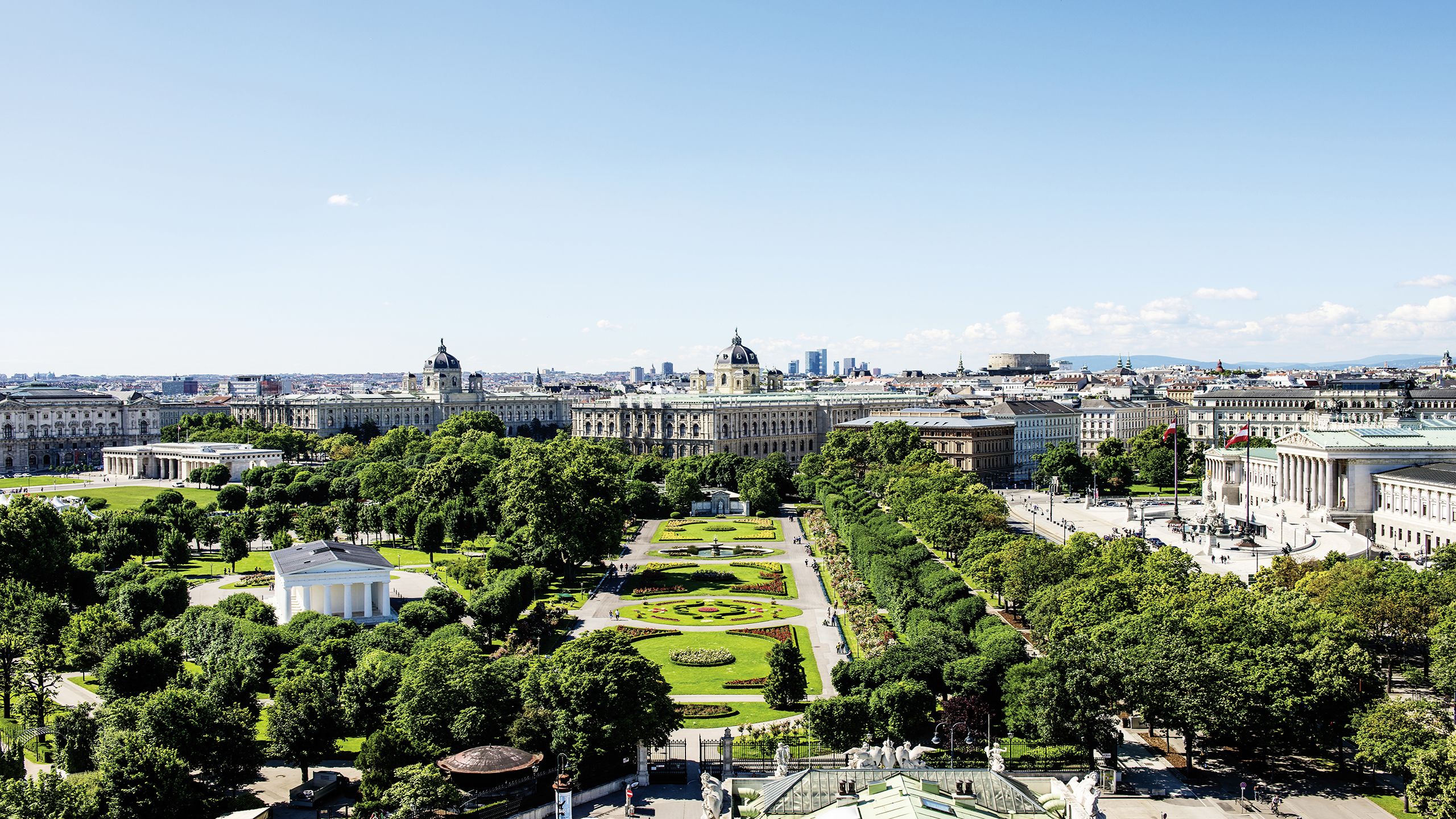Celebrate Vienna's Past and Present in 2023
In 1873, the Vienna World's Fair cemented Vienna as a major global city. Today, it still reaps the successful legacy of the fair by continuing to claim the coveted title of Most Livable City. Honoring this historic milestone, Vienna will celebrate the best of its past, present and future in 2023.

150 Years of Progress
Year after year, Vienna is voted "most livable city". The origins of this high quality of life stem 150 years back when Vienna became a global city during the Vienna World’s Fair. There are plenty of reasons to come to Vienna to be inspired by the progressive spirit of the 1873 World's Fair and experience the city's contemporary offerings.
Noteworthy Celebrations in 2023
In Vienna’s Prater Park, the new “Panorama Vienna" exhibition venue will commemorate the rotunda, which was the symbol of the World's Fair and the world's largest domed structure at the time. The new venue will be 112 feet tall and show imposing panoramic art and images.
The fully remodeled Wien Museum, on Karlsplatz, is scheduled to reopen to the public towards the end of 2023. With its unique collection of high-quality works of art and historic exhibits, the Wien Museum offers insights into the city's history, from the Neolithic period to the present day.
For the 150th anniversary, the MAK – Museum of Applied Arts, Vienna, has two exhibitions on its program that make reference to 1873: One will focus on the trend towards Orientalism, which was triggered by the Vienna World's Fair, and the other is a special exhibition to celebrate J. & L. Lobmeyr, one of the most iconic Viennese companies. This renowned manufacturer of crystal glass took part in the World's Fair in 1873 and celebrates its 200th anniversary in 2023.
The jeweler A. E. Köchert also participated in the World's Fair in 1873. The company attained international fame, mainly for creating the star jewelry that Empress Sisi wore in her hair. A. E. Köchert still offers its refined assortment of jewelry in the historic shop on Neuer Markt, which the company founded in 1814.
In the early 1870s, speculators wanted to cut down large tracts of the Vienna Woods for profit. The first environmental campaign in Austria prevented this from happening and the Vienna Woods was saved. Explore the woodlands, which today is one of Vienna's most important local recreation areas.

Prater with the Vienna Ferris Wheel © Niklas Schnaubelt
Prater with the Vienna Ferris Wheel © Niklas Schnaubelt

© Carl Waage (Artist), Heinrich Gerhart (Drucker), bez.: "Vienna World Exhibition 1873", Wien Museum Inv.-Nr. 60231, CC0
© Carl Waage (Artist), Heinrich Gerhart (Drucker), bez.: "Vienna World Exhibition 1873", Wien Museum Inv.-Nr. 60231, CC0

Wien Museum © Certov / Winkler + Ruck Architecture
Wien Museum © Certov / Winkler + Ruck Architecture

MAK (Museum of the Applied Arts) © WienTourismus / Paul Bauer
MAK (Museum of the Applied Arts) © WienTourismus / Paul Bauer

J. & L. Lobmeyer © WienTourismus / Paul Bauer
J. & L. Lobmeyer © WienTourismus / Paul Bauer

© A. E. Köchert
© A. E. Köchert

Vienna Woods © Austrian Tourist Office / Ulli Cecerle-Uitz
Vienna Woods © Austrian Tourist Office / Ulli Cecerle-Uitz

© WienTourismus / Christian Stemper
© WienTourismus / Christian Stemper

© Unknown, Folding fan with the Rotunda, 1873, Wien Museum Inv.-Nr. M 1460, CC BY 4.0 / Christin Losta
© Unknown, Folding fan with the Rotunda, 1873, Wien Museum Inv.-Nr. M 1460, CC BY 4.0 / Christin Losta
Facts and figures on the Vienna World's Fair of 1873
• 53,000 exhibitors, 35 participating countries, 194 pavilions designed in various national styles.
• The rotunda was approximately 284 feet tall with a diameter of 440 feet and was the largest dome in the world at the time. Visitors would have needed 40 days to view all the pavilions.
• Instead of the anticipated 15 million visitors, only 7.25 million attended. The reason was a cholera outbreak that killed 3,000 people.
• The World's Fair ended with a 14.8 million guilders deficit, but it gave Vienna's development a cultural and industrial boost like no other major event.
• The period around 1873 is considered the birth of tourism as we know it today and unleashed a construction spree in the hotel sector. The legendary Hotel Imperial opened its doors in 1873, as well as the Palais Hansen, today a Kempinski hotel on Ringstrasse (Ring Boulevard).
Learn more about Vienna’s celebrations in 2023! See you there!

Giant Ferris Wheel at Vienna's Prater. © WienTourismus / Peter Rigaud
Giant Ferris Wheel at Vienna's Prater. © WienTourismus / Peter Rigaud
